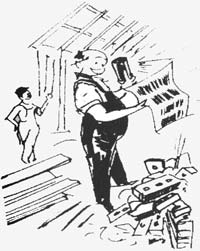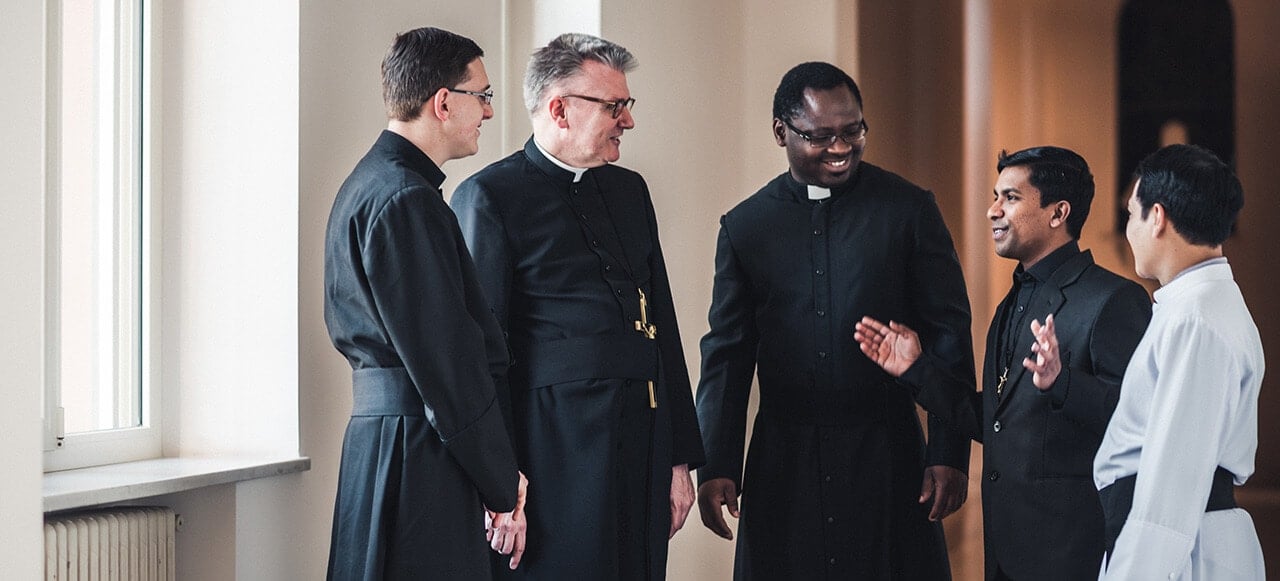
The Oblates first established themselves in the British Isles back in 1843. At the time of the Founder’s death, some sixty members of Irish origin could be counted. Among these, Brother Laurent Biggan was remarkable, especially for his important role in education.
An inflexible Catholic
He was born in Cootehill, Ulster province, on February 14, 1810. During his entire life he professed the Catholic Faith, as transmitted by his parents. An intelligent boy of 15, young Laurent won the Mathematics prize in a public contest open to students of all ages. This achievement opened a promising future before him, providing he renounced his Faith. He preferred to remain faithful to his Baptismal promises and refused to accept these temporal advantages. He began by teaching in his native land. About ten years later, when he learned that the children of his compatriots living in Scotland lacked teachers, he requested and obtained, in spite of the fact that he was both Irish and Catholic, a teaching position in the National School of Edinburgh. In the course of a mission preached by Father Robert Cooke he came to know the Oblates, and decided, at the age of 45 to enter the novitiate. When he became an Oblate, in 1856, he was given the responsibility of directing the schools at Inchicore, a post that he occupied to everyone’s satisfaction. During his stay of a few years at Leith, in northern Scotland, he witnessed a rather bewildering incident that embarrassed the local Presbyterians.
The Protestants in panic
The first religious to reappear in Scotland, after three centuries of banishment, were the Oblates of Mary Immaculate in 1852. Eight years later, when they began the construction of a second residence, at Leith, the Protestants became fearful. “Heaven will punish us” said the fanatical disciples of John Knox “if we do not object to this monkish invasion.” But, how to carry out this objection? After much hesitation, a long protest was written on parchment. It explicitly condemned the papists who were invading their region. Since the use of force was out of the question, at least they wanted future generations to know that against their will the “enemy” implanted its home in this city. Their protest, drawn up and boldly signed by all the members of the sect, was now ready. But what to do with it? They hesitated to publish it in the papers, for fear of those Irish Catholic devils, most of whom were robust dock workers.
Prudence rather advised recourse to a clever expedient. They hid the precious document, along with a Protestant Bible and violent anti-Catholic pamphlets, in a tin box. A workman took it upon himself to conceal the container in one of the walls of the building under construction. This saved their honor! In a few centuries, when this house falls into ruins, their posterity will learn, with legitimate pride, that in the past there had been intrepid people at Leith!
The ploy uncovered
But the Immaculate Mother of God watched over the house of her Oblates. The architect, while inspecting the progress of the work, noticed that one of the walls had not been correctly placed. He ordered to take it down and reposition it a meter further. It was precisely during this demolition, on August 15, 1860, the very feast of Our Lady’s Assumption (a date to be noted), that Brother Biggan, accompanied by Father Patrick Kirby, noticed something shining between the partitions of the wall. They approached…separated the boards, and laid hold of the suspicious object. They forced it open and withdrew the content. Their astonishment gave rise to a burst of laughter. The news of the “tin box” spread like wildfire throughout the city. Everywhere, in the drawing-rooms, in the pubs, and on the docks people spoke of the famous discovery. The signers didn’t know where to hide their shame and displeasure. Truly, their descendants would have reason to be proud!
André DORVAL, OMI
